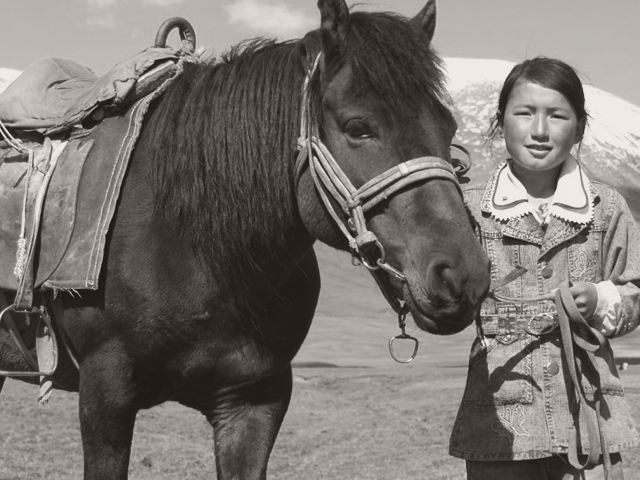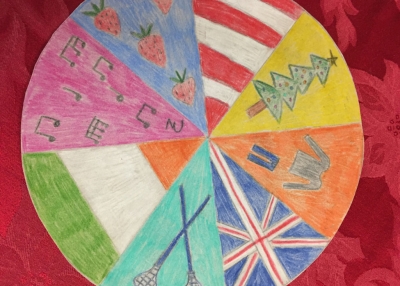A Museum as Time Capsule
Studying a Mongolian Saddle as an Example

This lesson focuses on using museums, or more precisely, artwork or artifacts as resources to study history and geography.
Objectives/Skills
Through this activity, students will be able to develop visual literacy skills and specifically:
- Make defensible inferences based on observation of perceived evidence
- Use observation and inference to recognize the validity of alternative approaches or solutions
Assessment
Quality of student discussion about an object
Procedure
Preparatory Activity. Practicing observation and inference.
- Present the following scenario to the class: As archaeologists from another planet in the distant future, we find on Earth only one artifact, a small metal disc (a penny, though never identified as such). What inferences can we make about the vanished inhabitants? (Used fire to smelt metal, had a level of technology high enough to make a perfectly round disk, had a written language, possible appearance of inhabitants and architecture, etc.)
-
Give the students the following list of questions to consider when looking at a common object of your choosing. Have them record their observations and inferences on paper.
- What are the physical characteristics of the object?
- What inferences can you make about the function of the object?
- What inferences can you make about the values, world view, and psychology of the people who made it? Tell the students not to be afraid of using their imaginations.
- From your own previous reading, picture-looking, or experience, can you find any comparisons or contrasts?
- What generalizations can you make?
Museum Activity
- In small groups students examine, discuss, and record their observations for several objects previously selected by the teacher (perhaps, with the expertise of a museum educator) and identified on a map of the museum.
- Each group starts with a different item to avoid crowding.
- After all groups have finished, meet with a museum educator for further information and clarification of puzzling observations.
- When back in the classroom, debrief the students by discussing each of the objects examined and the aspects of observing and inferring the students found to be easy or difficult.
-
Question: what were examples of adaptation, that is, doing things another way from which we are accustomed? How do these adaptations suit their own time or situation?
Example of an artifact that might be examined: A saddle from Mongolia- What is it? (a saddle)
- What would you hypothesize is its most import feature? (stirups)
- Why? (stirups create a stable platform from which to shoot arrows, and they make sudden stops, starts, and turns more secure)
- In what ways is it similar to or different from other saddles? (similar to an English saddle and different from a Western saddle in that it has no horn)
- What is the horn on a Western saddle used for? (to hold taught the rope after it is flung around an animal's neck)
- How did the Mongols catch animals instead? (noose on a long pole)
- Did the Mongols value saddles? (As herders, the Mongols valued saddles very highly, which can be seen in the elaborate decorations and craftsmanship)
As a teacher, you may be surprised at how much students can see when they aren't told what they are supposed to see—and how creative they can be in making inferences from their observations.







